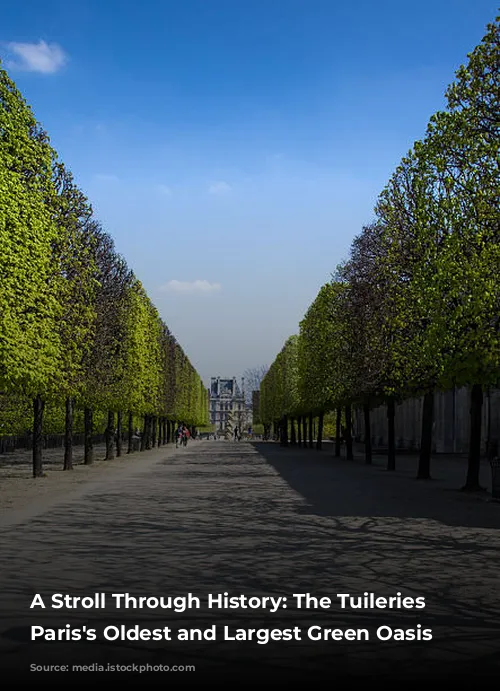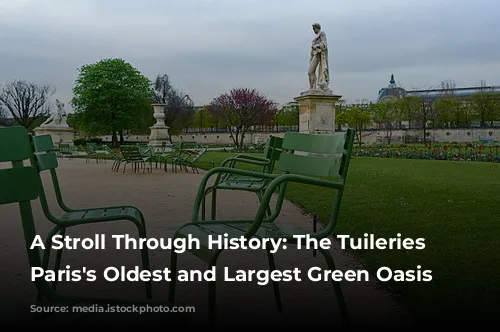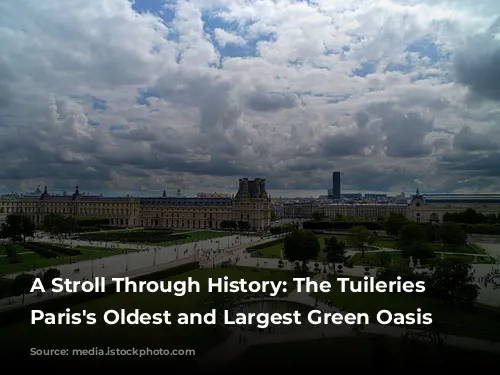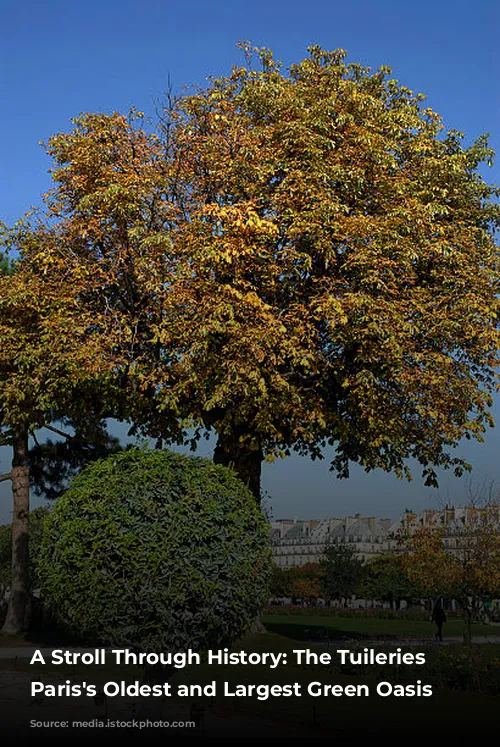The Tuileries Garden, the oldest and largest green space in Paris, is a captivating blend of history, art, and natural beauty. It’s a place where time seems to stand still, inviting you to wander through its meticulously designed paths and discover hidden treasures.

A Royal Legacy
Walking into the Tuileries Garden from the Place de la Concorde, you’re greeted by a row of statues, dating back to 1716, depicting figures from antiquity. These statues are a testament to the garden’s rich history, starting with its origins as the private garden of Catherine de Medici.
The garden was originally envisioned by Catherine de Medici as a Florentine-inspired paradise, a stark contrast to the formal gardens of the Middle Ages. She built a palace called the “Tuileries” within the garden, inspired by the gardens of her native Italy. The Tuileries Palace was later destroyed in a fire during the Paris Commune in 1871, leaving only the majestic garden behind.

From Royalty to Public Promenade
In 1664, Louis XIV, the “Sun King,” entrusted the renowned landscape architect André Le Nôtre with the task of redesigning the garden. Le Nôtre, known for his masterpieces at Versailles, Marly, Saint-Cloud, and Saint-Germain, transformed the Tuileries Garden into a formal masterpiece with grand avenues, symmetrical parterres, and a focus on perspective.
The garden was officially opened to the public during the reign of Louis XIV, marking a significant moment in Parisian history. It became the first public garden in the city, welcoming “honorable people” to enjoy its serene atmosphere. The garden’s transformation from a private royal retreat to a public space reflects the evolving social dynamics of the time.

A Living Museum of Art and Nature
The Tuileries Garden is a canvas for nature and art to coexist in perfect harmony. It’s a place where you can enjoy the shade of ancient lime trees and marvel at the elegance of the Orangerie, which houses the famed Water Lilies by Claude Monet.
The garden is a true open-air museum, featuring a remarkable collection of sculptures from different periods, including works by Rodin, Coysevox, Carpeaux, and contemporary artists like Max Ernst, Alberto Giacometti, and Jean Dubuffet. You can spend hours leisurely strolling through the paths, admiring these masterpieces while surrounded by the vibrant colors of the garden’s seasonal blooms.

A Place of Peace and Rejuvenation
The Tuileries Garden is a haven of peace and tranquility in the heart of bustling Paris. You can escape the city’s noise and chaos by simply sitting on one of the garden’s three thousand chairs and soaking up the peaceful atmosphere.
You can also enjoy a traditional Parisian picnic on the sprawling lawns, or take a refreshing walk along the grand avenues, lined with majestic trees. Whether you’re looking to relax, reflect, or simply enjoy the beauty of nature, the Tuileries Garden offers a sanctuary for every soul.

A Legacy Enduring Through Time
The Tuileries Garden has undergone several transformations throughout its history, but it has always remained a central part of Parisian life. It has hosted grand celebrations, witnessed political upheavals, and served as a space for art, nature, and reflection.
Today, the Tuileries Garden stands as a testament to the enduring legacy of French landscape design and a reminder of the importance of preserving green spaces in urban environments. It remains a place where history, art, and nature intertwine, offering a unique experience for visitors from all walks of life.









